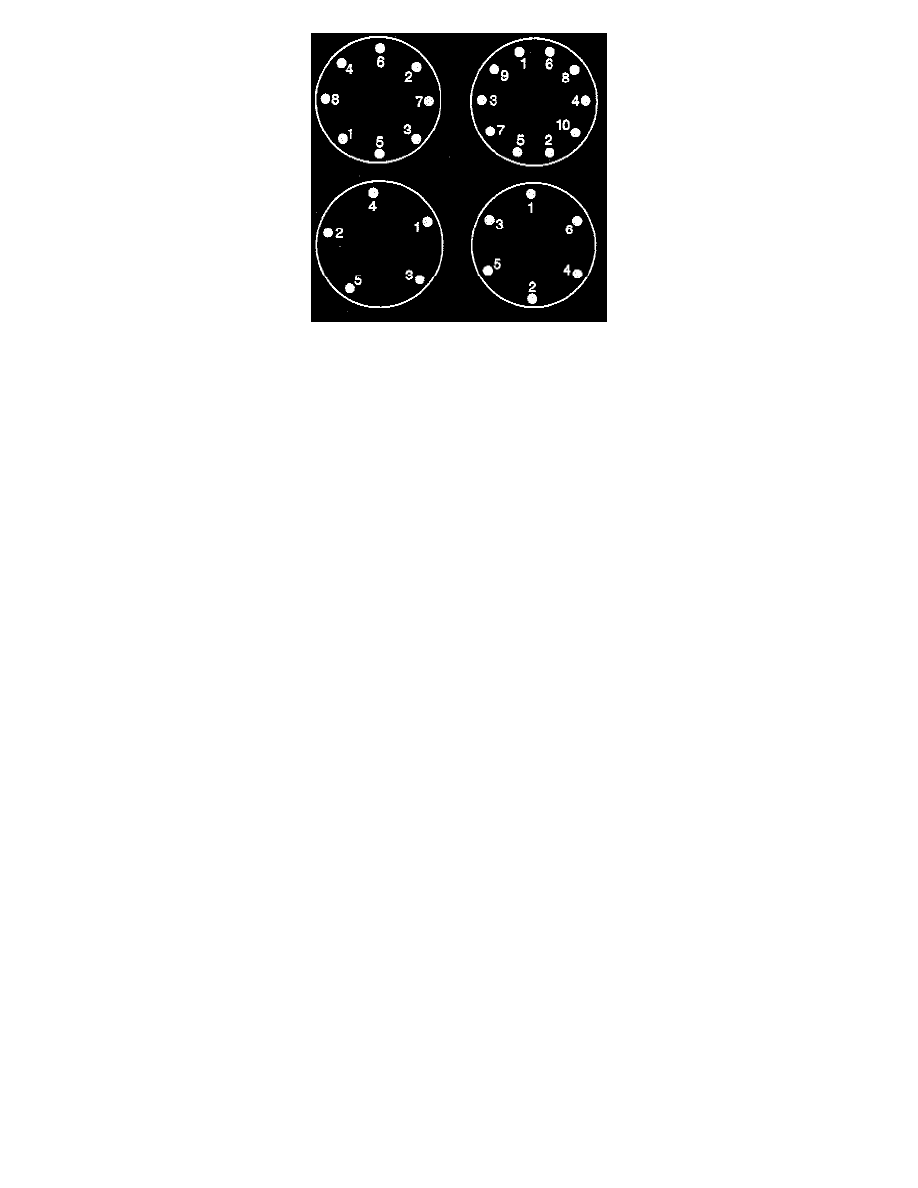K 3500 Truck 4WD V8-5.7L VIN R (1998)

INSTALLATION PROCEDURE
1. Install the inner and outer wheel and the clamp ring. Make sure the pins on the clamp ring face outward.
NOTICE: A torque wrench or J 39544 must be used to ensure that wheel nuts are tightened to specification. Never use lubricants or penetrating
fluids on wheel stud, nuts, or mounting surfaces, as this can raise the actual torque on the nut without a corresponding torque reading on the torque
wrench. Wheel nuts, studs, and mounting surfaces must be clean and dry. Failure to follow these instructions could result in wheel, nut, and/or stud
damage.
NOTICE: Always use the correct fastener in the proper location. When you replace a fastener, use ONLY the exact part number for that
application. The manufacturer will call out those fasteners that require a replacement after removal. The manufacturer will also call out the
fasteners that require thread lockers or thread sealant. UNLESS OTHERWISE SPECIFIED, do not use supplemental coatings (paints, greases, or
other corrosion inhibitors) on threaded fasteners or fastener joint interfaces. Generally, such coatings adversely affect the fastener torque and joint
clamping force, and may damage the fastener. When you install fasteners, use the correct tightening sequence and specifications. Following these
instructions can help you avoid damage to parts and systems.
2. Install the wheel nuts.
Tighten
^
Tighten the wheel nuts to specifications.
^
Tighten the wheel nuts evenly and alternately in order to avoid excessive runout.
3. Install the hub cap, If required.
4. Lower the vehicle.
Aluminum Wheel Porosity Repair
1. Remove the tire and wheel assembly.
2. Locate the leaking areas by inflating the tire to 345 kPa (50 psi), and by dipping the tire and wheel assembly into a water bath.
3. Mark the leak areas. Remove the tire from the wheel.
4. Scuff the inside surface at the leak area with 80 grit sandpaper. Clean the area with general purpose cleaner.
5. Apply a 3 mm (1/8 in) thick layer of adhesive/sealant to the leak area. Allow 12 hours to dry.
6. Mount the tire on the wheel. Inflate the tire to 345 kPa (50 psi). Check the tire for leaks.
CAUTION: To avoid serious personal injury, do not stand over tire when inflating. The bead may break when the bead snaps over the
safety hump. Do not exceed 275 kPa (40 psi) pressure when Inflating any tire If beads are not seated. If 275 kPa (40 psi) pressure will not
seat the beads, deflate, relubricate the beads and reinflate. Overinflation may cause the bead to break and cause serious personal injury.
7. Adjust the tire pressure in order to meet specifications.
8. Balance the tire and wheel assembly.
9. Install the tire and wheel assembly.
Aluminum Wheel Refinishing
A protective clear coating covers the surface of original equipment cast aluminum wheels. A surface degradation develops if frequent automatic car
wash cleaning wears off the factory applied protective clear coating. This can happen at some automatic car wash facilities that use aggressive silicon
carbide-tipped air brushes to clean whitewalls and tires. Once you damage the protective clear coating, exposure to caustic cleaners and road salt can
cause further surface deterioration. The following procedure details how to strip, clean, and re-coat aluminum wheels affected by these conditions:
Important: You do not need to remove the tire from the wheel in order to perform this procedure. If you remove the tire, mark the tire position to the
